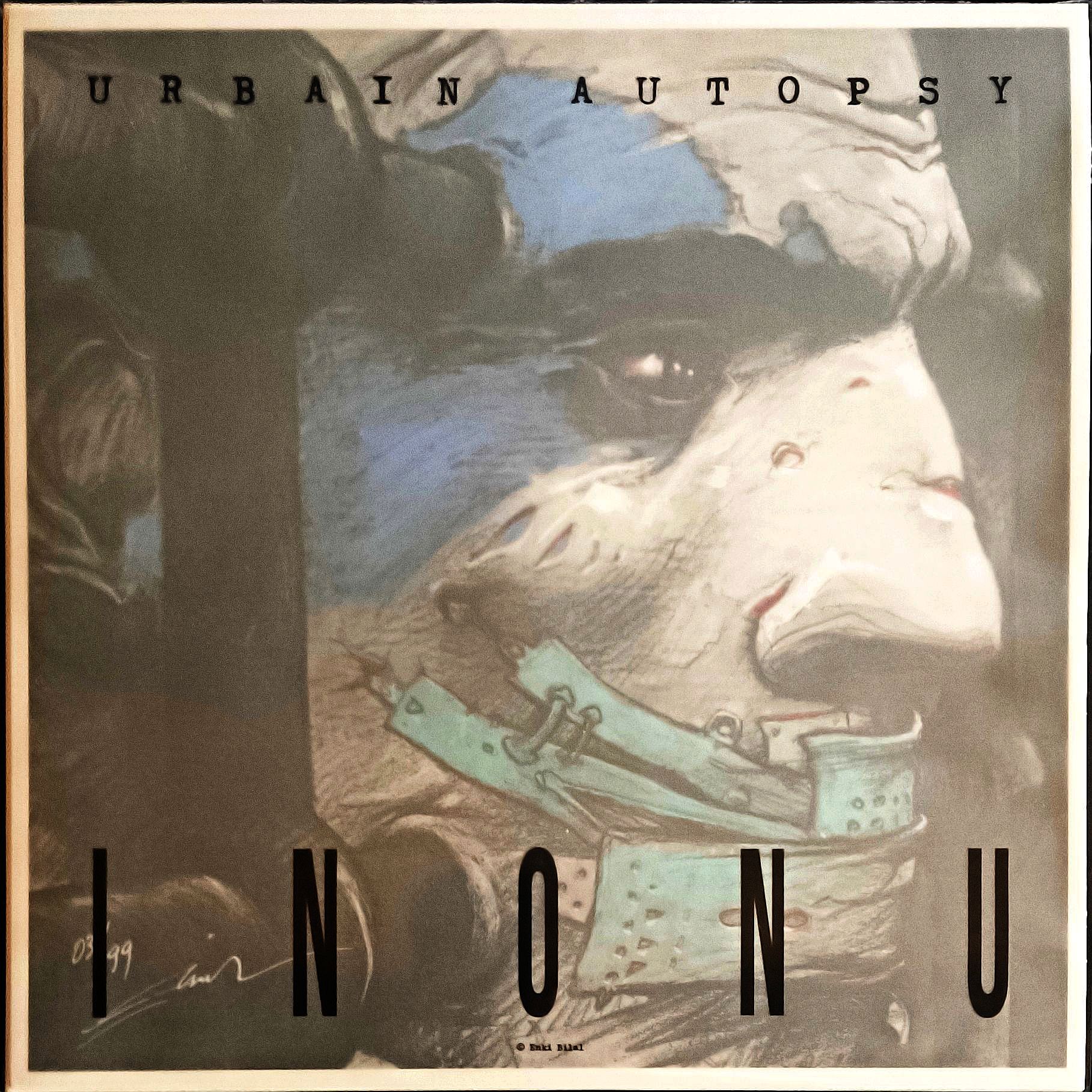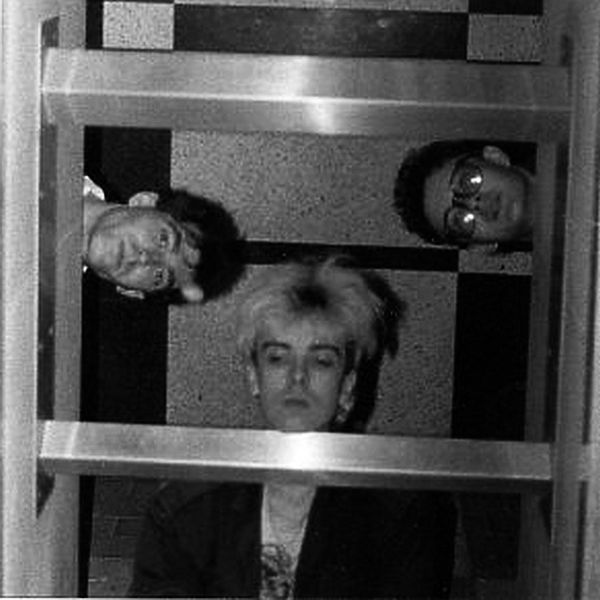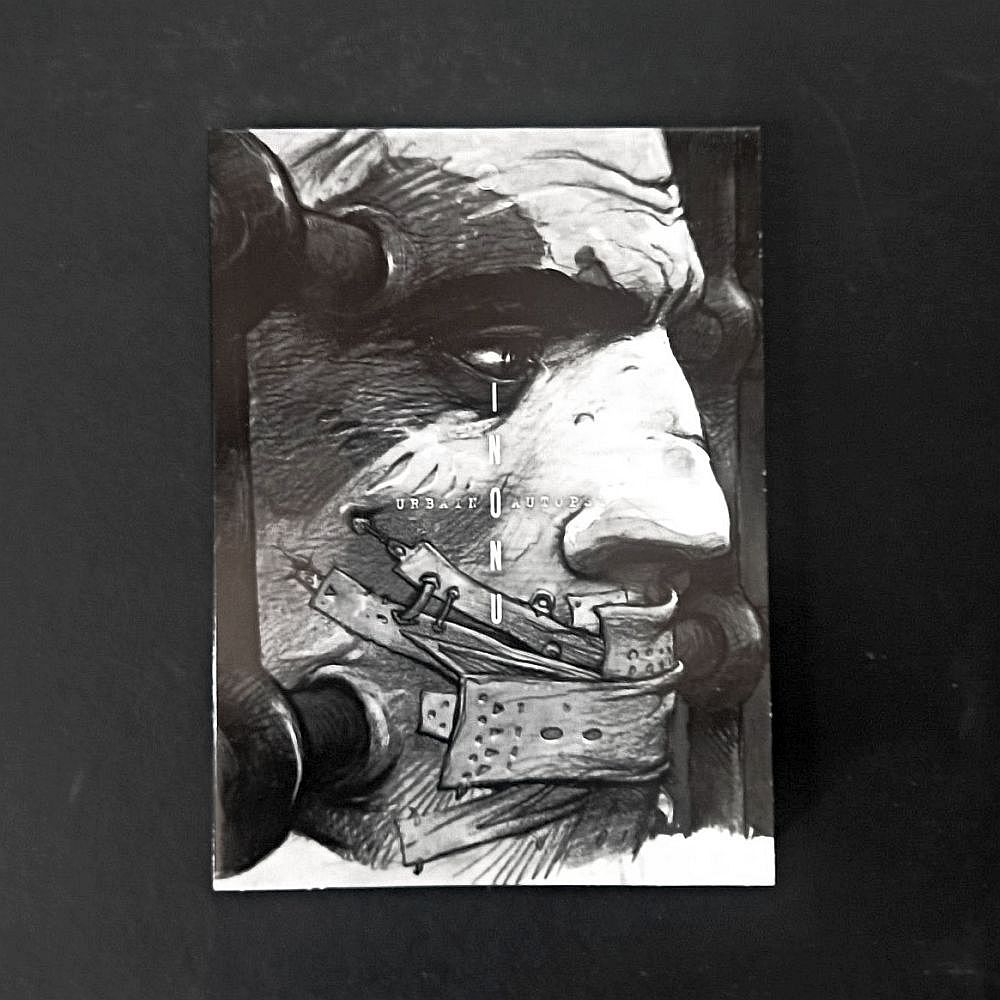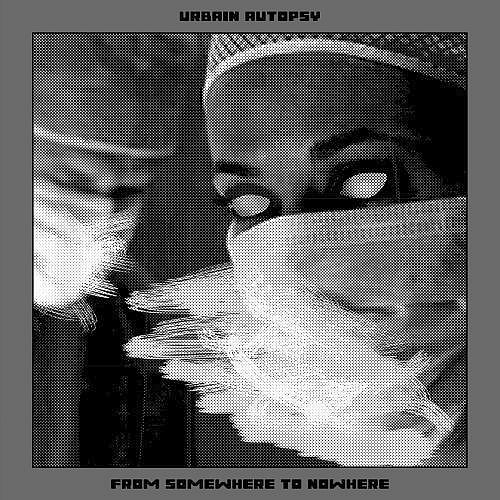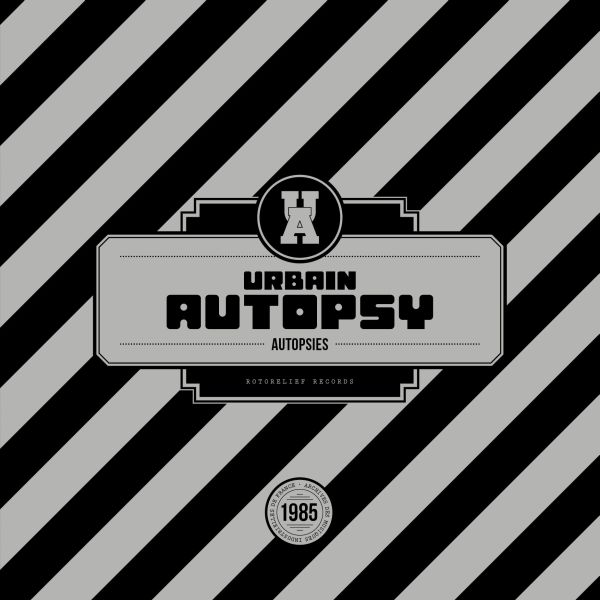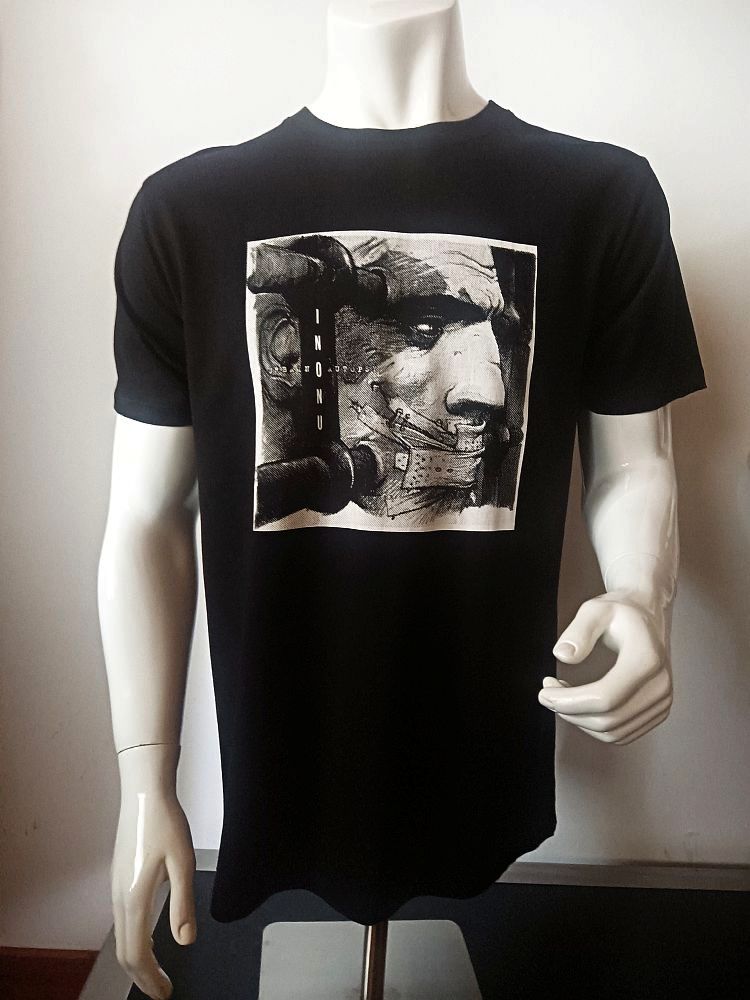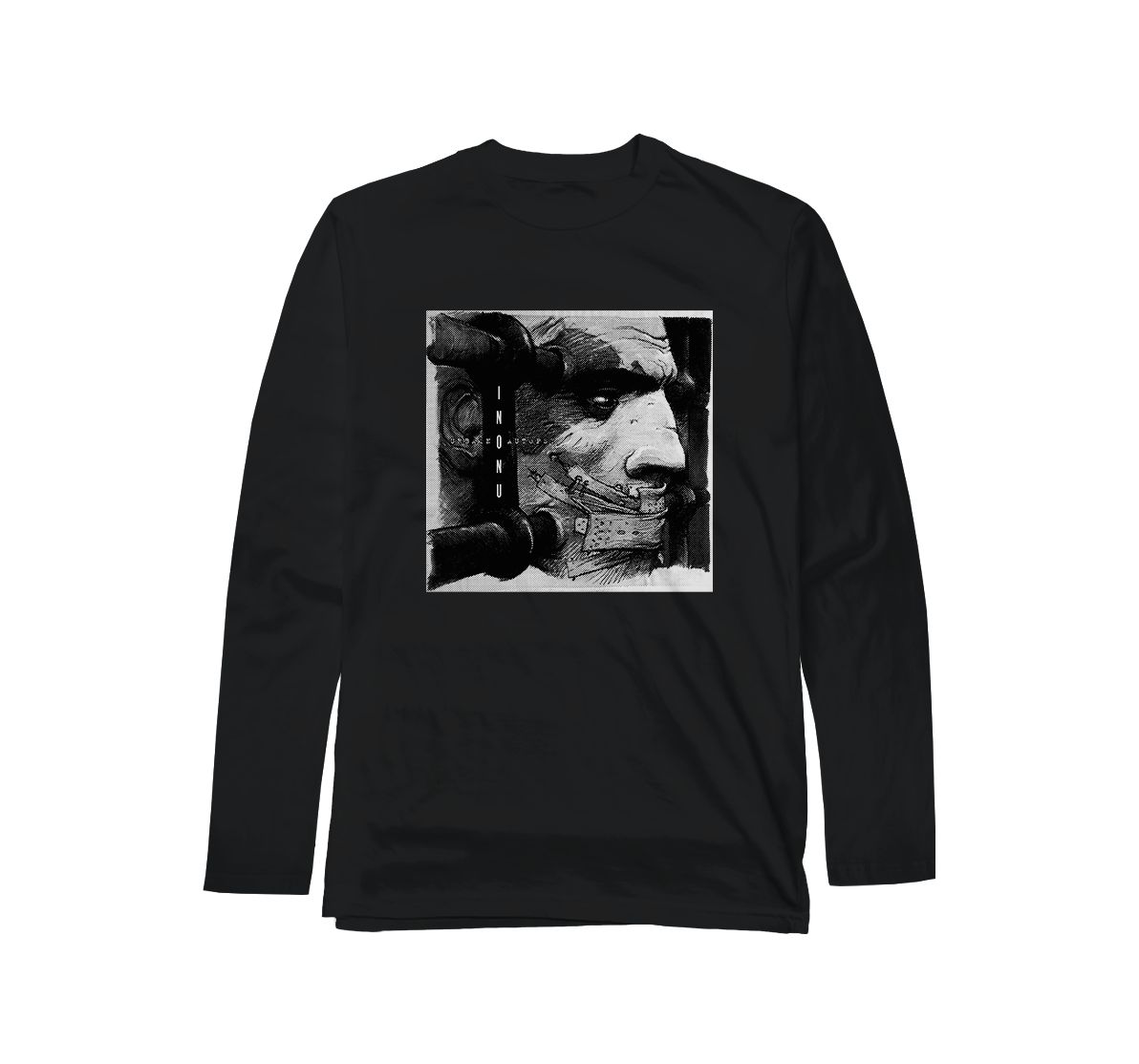“INONU” by URBAIN AUTOPSY | Double vinyl album | illustrations by Enki Bilal | ref ROTOR0079
Inonu is the last collaboration between the three founding members of the industrial band Urbain Autopsy, originally released in 1988, in a box containing two C40 tapes, a booklet and a leaflet on the now defunct Tears Compilations label.
Inonu is a concept album, it is divided in 4 acts, themselves divided in scenes, and as it is a story there is no dead time between each scene. The pieces follow one another like in life. Inonu has a beginning and an end. You can’t listen to one part and ignore the others, it’s as if you wanted to read only one chapter of a book or watch only one scene of a play. It is the most accomplished project of the group.
Inonu tells a slice of history of the life of an imaginary totalitarian country, which could make think of an ex-Eastern country, who knows? It should be noted that Inonu was published one year before the collapse of the communist bloc… We can also compare the architecture, the constructivist art and the industrial music of Urbain Autopsy and notice the osmosis that emerges. Some names have been picked at random from an encyclopedia. Their realities have no relation with the fiction transmitted in Inonu.
The story that begins is known…
ACT 1: It tells the story of a country dominated by a dictator, with the recurrent theme of “an iron fist” and that of an oppressed people.
ACT 2: Two revolutionaries form a coalition to eliminate the dictator and begin rebuilding the country.
ACT 3: One of the two revolutionaries, having more desire for sole power, eliminates his friend and takes over the reins of the country by force.
ACT 4: The phrase “the snake that bites its own tail” is used again, and over time he becomes a new dictator with the same problems as before.
The imaginary and the factual collide in OUR PRESENT. This musical concept generates a futuristic collaboration between the musicians, the illustrator and the editor of this double album.
What a visionary look the group Urbain Autopsy had in 1988 when they conceptualized a fictional reality, one year before the fall of the Berlin Wall in 1989, the dislocation of the USSR in 1991, the Balkan wars of the 1990’s, these transforming states into myriads of micro-states, often implying a rise of authoritarianism. So today, in this year 2022, this incomprehensible or programmed war (each one will choose) between two European countries, can we see a vision in it? See the subtitle of Act III: “The fratricide”.
What a visionary look Enki Bilal had through his committed comic strips dealing with future societies between progressism and authoritarianism, notably the 1994 effigy, which constitutes the front cover of the album INONU and which, originally, was intended for Amnesty International, it must be underlined with respect.
What a visionary and audacious look Rotorelief had, making the obvious junction between the sound and scenaristic concept of the band with the reality / fiction of Enki Bilal.
A few years before the pandemic and chaos, two themes emerge: masked face, muzzled speech.
In conclusion, does history always repeat itself?
Was Inonu just meant to reflect real events of the past, present… and now… to come? Everyone will judge.

